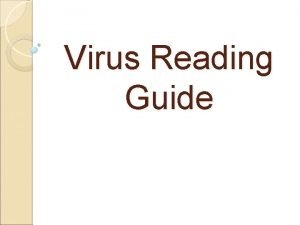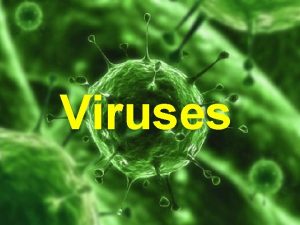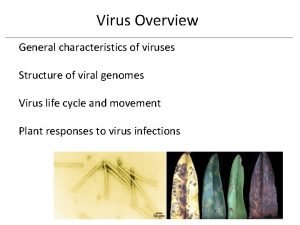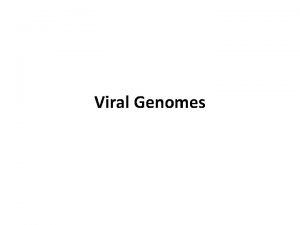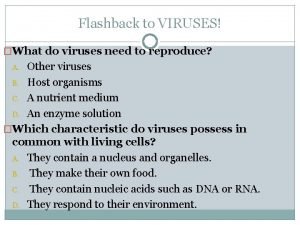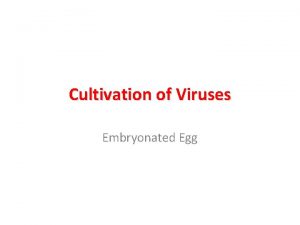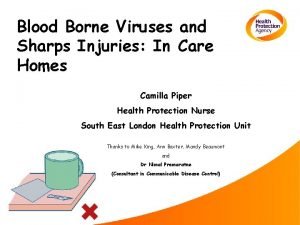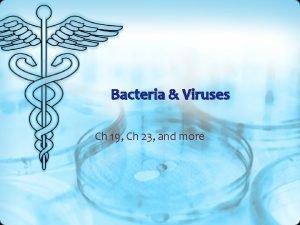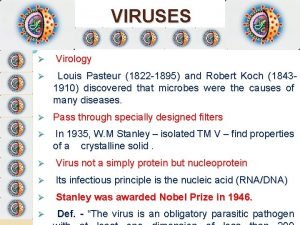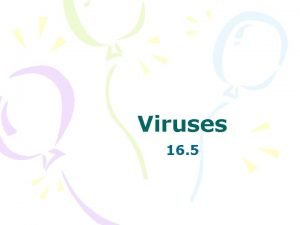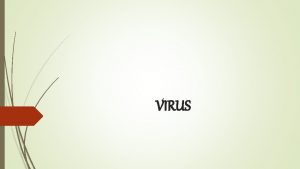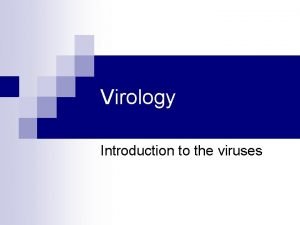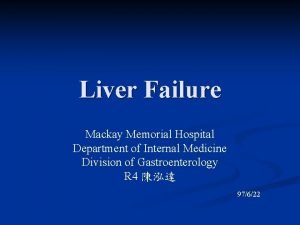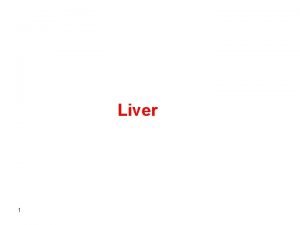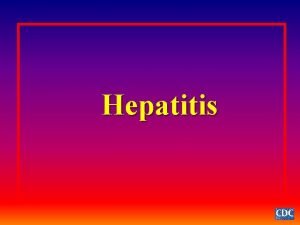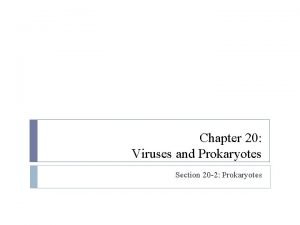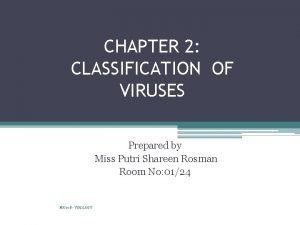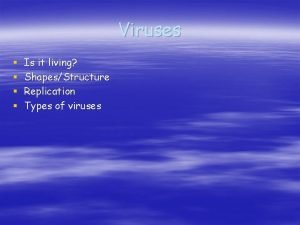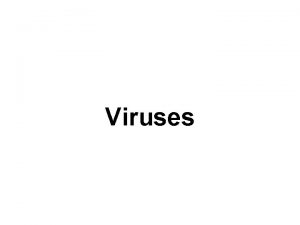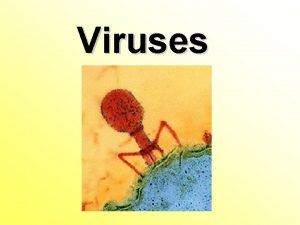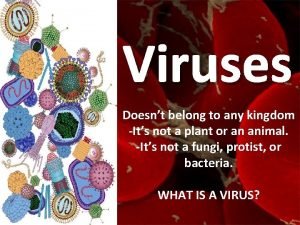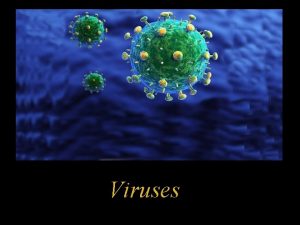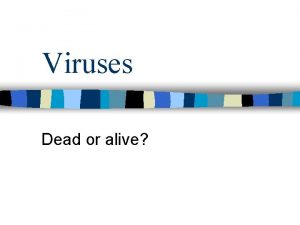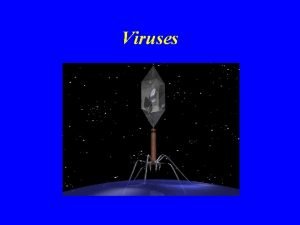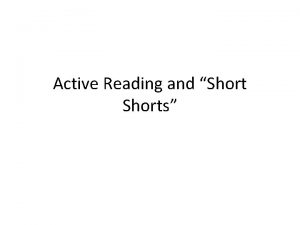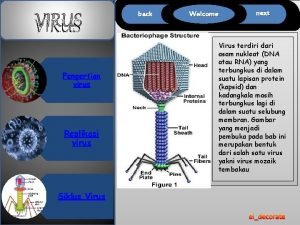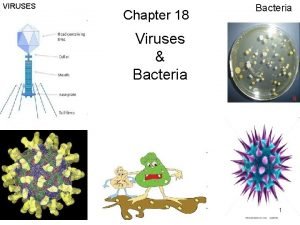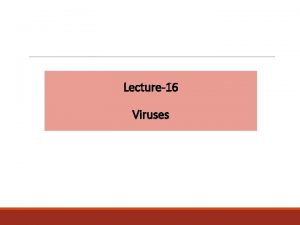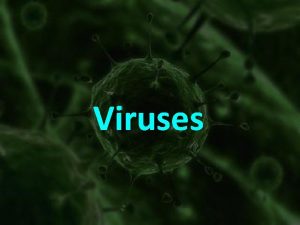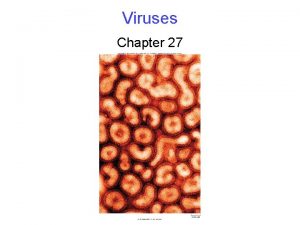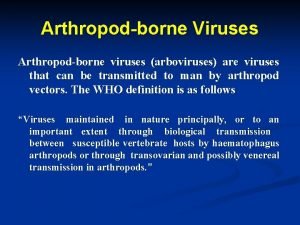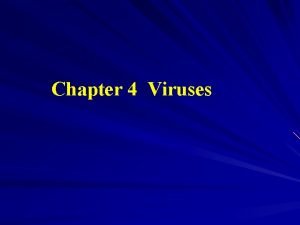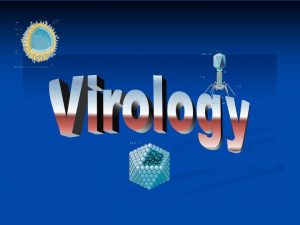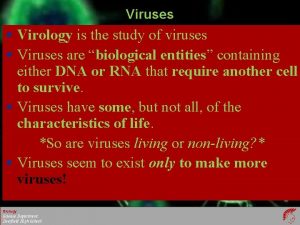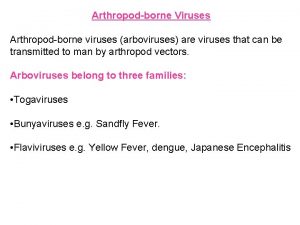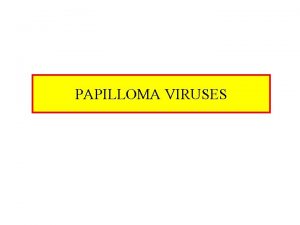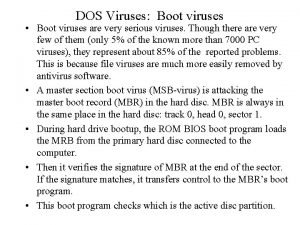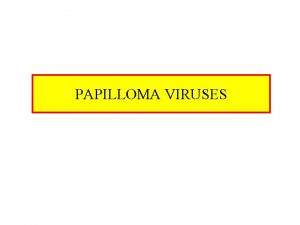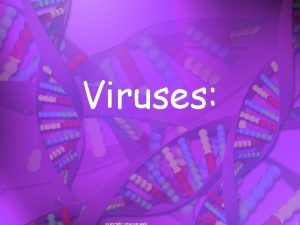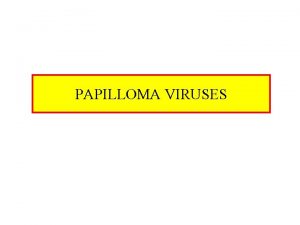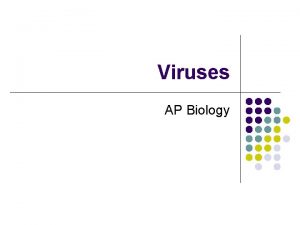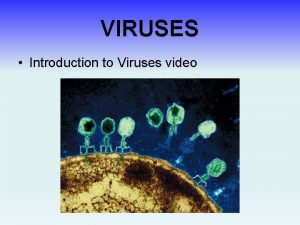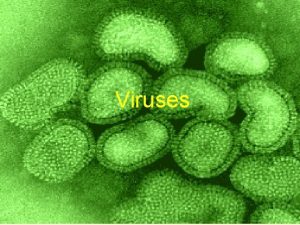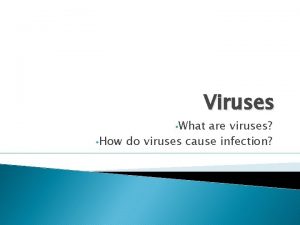Virus Reading Guide How Active Viruses Multiply Virus






































- Slides: 38

Virus Reading Guide

How Active Viruses Multiply Virus attaches to the surface of a living cell

How Active Viruses Multiply Virus injects genetic material into cell

How Active Viruses Multiply Cell produces viral proteins and genetic material

How Active Viruses Multiply Viruses assemble

How Active Viruses Multiply Cell bursts, releasing viruses

How Hidden Viruses Multiply Virus attaches to the surface of a living cell

How Hidden Viruses Multiply Virus’s genetic material becomes part of the cell’s genetic material.

How Hidden Viruses Multiply Later, virus’s genetic material becomes active.

How Hidden Viruses Multiply Cell produces viral proteins and genetic material; viruses are assembled

How Hidden Viruses Multiply Cell bursts, releasing viruses

1. Why do biologists consider viruses to be nonliving?

1. Why do biologists consider viruses to be nonliving? Viruses are not cells and do not have the characteristics of organisms.

2. True/ False. Viruses multiply the same way as other organisms.

2. True/ False. Viruses multiply the same way as other organisms. False

3. Which is the name of a living that provides energy for a virus or an organism? A. Parasite B. Host C. Bacteriophage D. Particle

3. Which is the name of a living that provides energy for a virus or an organism? B. Host

4. Viruses act like ____ because they destroy the cells in which they multiply.

4. Viruses act like ____ because they destroy the cells in which they multiply. parasites

5. True/ False. Each virus can enter only a few types of cells in a few species.

5. True/ False. Each virus can enter only a few types of cells in a few species. True

6. True/ False. All viruses have the same shape.

6. True/ False. All viruses have the same shape. False

7. A virus that infects bacteria is called a(n) _______.

7. A virus that infects bacteria is called a(n) _______. bacteriophage

8. True/ False. Viruses are much smaller than bacteria.

8. True/ False. Viruses are much smaller than bacteria. True

9. Circle the letter of each sentence that is true about viruses. They are larger than cells. b. They need to be inside a living cell in order to reproduce. c. They contain genetic material. a.

9. Circle the letter of each sentence that is true about viruses. b. They need to be inside a living cell in order to reproduce. c. They contain genetic material.

10. Label the two basic parts of a virus in this diagram.

10. Label the two basic parts of a virus in this diagram. Protein Coat

10. Label the two basic parts of a virus in this diagram. Genetic material Protein Coat

11. True/ False. Some viruses are surrounded by an outer membrane envelope.

11. True/ False. Some viruses are surrounded by an outer membrane envelope. True

12. What are two functions of a virus’s protein coat?

12. What are two functions of a virus’s protein coat? 1. It protects the virus. 2. It allows the virus to attach to certain cells.

13. True/ False. The shape of the proteins allow the virus’s coat to attach to only certain cells in the host.

13. True/ False. The shape of the proteins allow the virus’s coat to attach to only certain cells in the host. True
 How active viruses multiply
How active viruses multiply Unlike lytic viruses lysogenic viruses do not
Unlike lytic viruses lysogenic viruses do not /watch?v=dckvspcd8gs
/watch?v=dckvspcd8gs While reading activities
While reading activities Why are viruses considered nonliving?
Why are viruses considered nonliving? Bacteriophage characteristics
Bacteriophage characteristics General characteristics of viruses
General characteristics of viruses Viruses
Viruses Lysogenic viruses do not
Lysogenic viruses do not Section 19-3 diseases caused by bacteria and viruses
Section 19-3 diseases caused by bacteria and viruses Cultivation of viruses
Cultivation of viruses Egg inoculation diagram
Egg inoculation diagram Egrette chapter 21
Egrette chapter 21 Nonliving particle that replicates inside a living cell
Nonliving particle that replicates inside a living cell Blood borne viruses
Blood borne viruses Lesson 1: viruses
Lesson 1: viruses Are viruses alive yes or no
Are viruses alive yes or no General characters of viruses
General characters of viruses Lytic infection
Lytic infection General characters of viruses
General characters of viruses Helical virus
Helical virus Hepatotropic viruses
Hepatotropic viruses Hepatotropic viruses
Hepatotropic viruses Hepatotropic viruses
Hepatotropic viruses Milad haddad
Milad haddad Chapter 20 viruses and prokaryotes
Chapter 20 viruses and prokaryotes Virus taxonomy
Virus taxonomy Study guide chapter 18 section 1 bacteria
Study guide chapter 18 section 1 bacteria Replication of viruses
Replication of viruses How do viruses differ from living things
How do viruses differ from living things Importance of viruses
Importance of viruses What does dna have that rna doesnt
What does dna have that rna doesnt Cmv
Cmv Best viruses
Best viruses Viruses video
Viruses video Spherical virus
Spherical virus Are viruses dead or alive
Are viruses dead or alive General properties of viruses
General properties of viruses Viruses
Viruses
